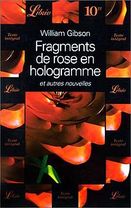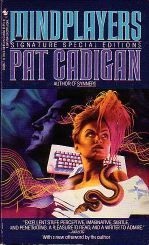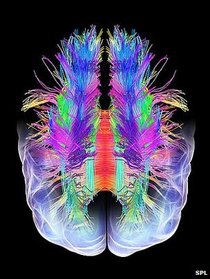|
Via Paul McAuley, researchers in Japan have developed a method of using MRI scans to view the images people see as they fall asleep. Just as the volunteers started to fall asleep inside the scanners, they were woken up and asked to recount what they had seen.  The next phase of the experiment? Viewing dreams in deeper sleep, and perhaps machines akin to the sense-recorders of William Gibson's "Fragments of a Hologram Rose," or perhaps the SQUIDS of Kathryn Bigelow's Strange Days. The researchers now want to look at deeper sleep, where the most vivid dreams are thought to occur, as well as see whether brain scans can help them to reveal the emotions, smells, colours and actions that people experience as they sleep. This comes on the heels of a story in which researchers have hooked humans and rats to brain computer interfaces, and used human thought to make the rat move. The human volunteers wore electrode caps that monitored their brain activity using electroencephalography (EEG). Meanwhile, an anaesthetised rat was hooked up to a device that made the creature's neurons fire whenever it delivered an ultrasonic pulse to the rat's motor cortex.  For many, these implications smack of something Orwellian, or even Kafkaesque, but I'm beginning to see it as an even stranger marriage of the cyberpunks and the Surrealists (both of whom always had interesting parallels anyway). Indeed, thinking of how these two technologies might be joined, I have images of a world imagined as a hybrid vision of Pat Cadigan's Mindplayers and the works of Salvador Dali and H. R. Giger, perhaps with a dollop of Michael Parkes.
0 Comments
Leave a Reply. |
Derek Austin Johnson has lived most of his life in the Lone Star State. His work has appeared in The Horror Zine, Rayguns Over Texas!, Horror U.S.A.: Texas, Campfire Macabre, The Dread Machine, and Generation X-ed. His novel The Faith was published by Raven Tale Publishing in 2024.
He lives in Central Texas. Archives
May 2024
Categories |


 RSS Feed
RSS Feed